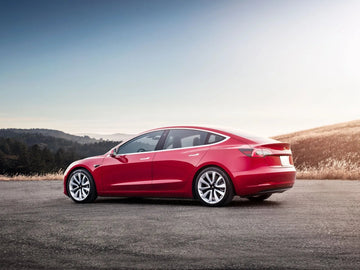Tesla's Autopilot feature has transformed the driving experience, offering a glimpse into the future of autonomous vehicles. However, with great power comes great responsibility. Mastering Autopilot requires understanding, awareness, and adherence to safety guidelines. In this blog, we'll delve into essential tips to harness the potential of Tesla's Autopilot while prioritizing safety and efficiency.
1. Familiarize Yourself with Autopilot Basics: Before embarking on your Autopilot journey, take time to understand its capabilities and limitations. Autopilot is designed for use on highways and well-marked roads, primarily assisting with tasks like steering, accelerating, and braking. It's not a substitute for attentive driving.
2. Stay Alert and Engaged: While Autopilot can handle many driving tasks, it's crucial to remain vigilant. Keep your hands on the wheel and be prepared to take control at any moment. Regularly touching the steering wheel helps ensure your engagement.
3. Use Autopilot in Suitable Conditions: Autopilot excels in clear weather and well-defined road conditions. Avoid using it during heavy rain, snow, or in low visibility situations. Similarly, construction zones and complicated urban environments may require your full attention.
4. Keep an Eye on Traffic and Surroundings: Autopilot is designed to navigate traffic, but it's essential to monitor the road ahead and the behavior of surrounding vehicles. Be prepared to intervene if unexpected situations arise.
5. Mind the Speed: Autopilot can adapt to traffic flow, but it's your responsibility to set a safe and appropriate speed. Adjust the speed settings as needed, particularly in areas with changing speed limits.
Tesery, dedicated to providing quality products and services to Tesla owners. The most trusted Tesla accessories shop and supplier, the choice of over 28,000 Tesla owners!
6. Navigate on Autopilot: Tesla's Navigate on Autopilot feature offers advanced lane-changing capabilities. Ensure it's activated only when you're comfortable with its behavior and can supervise lane changes safely.
7. Keep Cameras and Sensors Clean: Autopilot relies on a network of cameras and sensors for data collection. Regularly clean these components to maintain optimal functionality and accuracy.
8. Be Mindful of Hands-Free Driving: While Autopilot assists in steering, Tesla's Full Self-Driving (FSD) feature allows hands-free driving under specific conditions. Check local regulations and follow Tesla's guidelines for its safe use.
9. Stay Updated with Software Updates: Tesla frequently releases software updates that enhance Autopilot's capabilities. Keep your vehicle's software up-to-date to access the latest improvements and features.
10. Practice Defensive Driving: Even with Autopilot engaged, remember that defensive driving remains crucial. Anticipate potential hazards, follow traffic rules, and maintain a safe following distance.
Tesla's Autopilot is a remarkable advancement, revolutionizing the way we drive. By adhering to safety guidelines, staying engaged, and using Autopilot in suitable conditions, you can unlock its potential while ensuring your safety and the safety of others on the road. Embrace the future of driving responsibly, and let Autopilot enhance your journey while keeping you in control.




















































